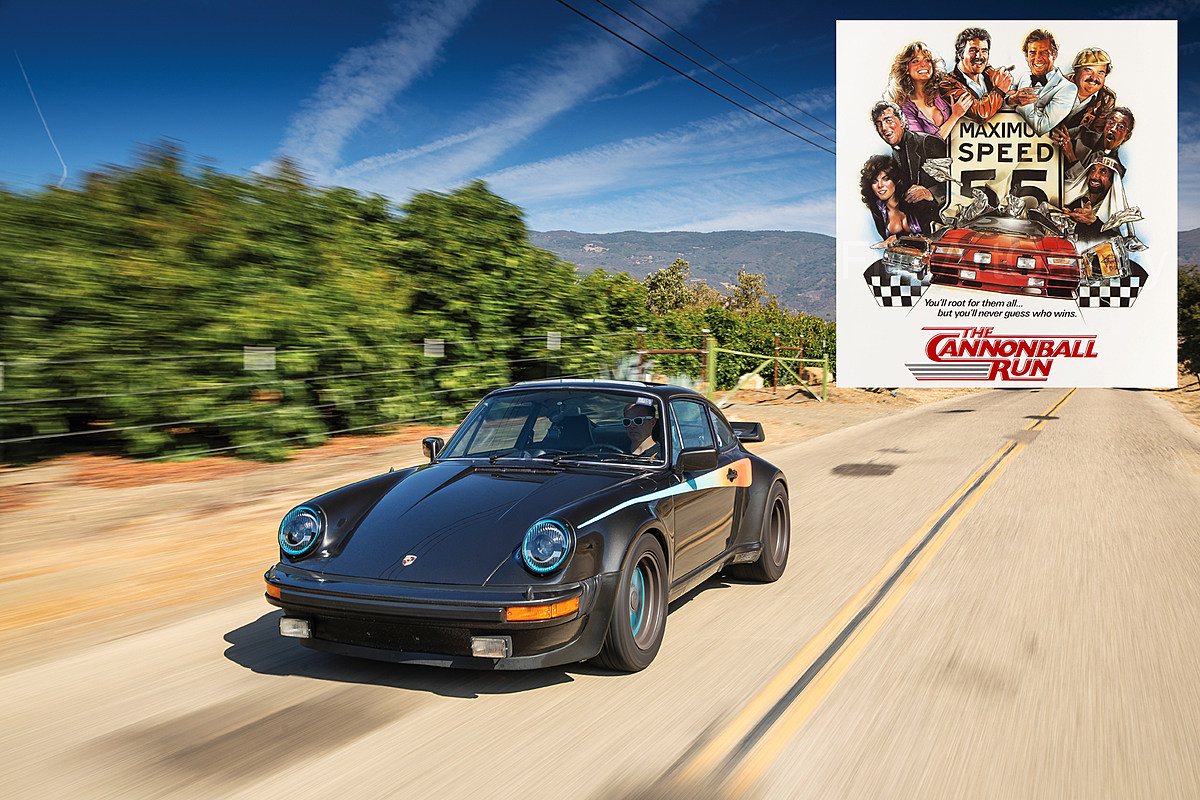A seemingly innocuous vehicle, secretly enhanced with added fuel tanks, police detection equipment and various after-market gadgets, has embarked on an illegal race across America. It may sound like the plot to a blockbuster film, but this Cannonball Run is definitely real.
The origins of the legendary coast-to-coast race can be traced to Car and Driver editor Brock Yates. In November 1971, he and his collaborator Steve Smith drove the original Cannonball Run — partly as a protest to strict traffic laws which were coming into effect and partly as a celebration of the American highway system. They’d chronicle their experience in Car and Driver’s March 1972 issue, describing the adventure as “a balls-out, shoot-the-moon, fuck-the-establishment rumble from New York to Los Angeles,” thus sparking a fascination with the cross-country trip.
Amateur racers began competing to see who could complete the run — starting at the Red Ball Garage in Manhattan, New York City and ending at the Portofino Inn in Redondo Beach, Calif. — in the shortest amount of time.
The race’s popularity soared even further after the 1981 film The Cannonball Run became a box office hit. The action/comedy, which was written by Yates and featured an ensemble cast including Burt Reynolds, Roger Moore, Farrah Fawcett, Dom DeLuise, Dean Martin, Sammy Davis Jr. and Jackie Chan, was the sixth highest grossing movie of the year.
Since real life racers travel well above the speed limit (often 100 mph or higher) and regularly disobey further road safety laws, the Cannonball Run is an illegal endeavor without any kind of official sanctioning body. Evading police and avoiding traffic are two of the biggest challenges participants face. Though the race’s popularity has gone through wanes and revivals, it has survived nearly 50 years now.
In 1979, a vehicle made the trip in 32 hours, 51 minutes. That mark would be broken in 1983, when a Ferrari 308 did it 32 hours, 7 minutes. It’d be another 23 years before the record was broken again, when a team driving a BMW M5 went coast-to-coast in 31 hours, 4 minutes. By 2013, the best time was sitting at 28:50, a mark which would remain until 2020 — a year which presented many unprecedented situations.
Every aspect of society was changed by the COVID-19 pandemic. As America fought to curb the deadly virus, more people worked from home than ever before. Many opted to isolate in their houses or stick to their local neighborhoods, dropping travel statistics to some of the lowest numbers seen in decades. Across the nation, traffic was drastically reduced on the streets and highways. This unexpected pandemic side effect created the perfect conditions for Cannonball Run records to fall.
“All of the Cannonballers are talking about it,” Doug Tabbutt, an experienced Cannonballer admitted to the New York Times in April of last year. “Traffic is a major logistical challenge. Police is a variable we can almost control. There are tons of countermeasures. But we cannot control traffic.”
Indeed, the Cannonball Run record was broken three different times in 2020 – going from 26 hours, 38 minutes in April to 25 hours, 39 minutes in May. The latter number was set by Tabbutt, Arne Toman and Dunadel Daryoush and remains the time to beat. As America has begun reopening, the roads are once again filled with vehicles — a good sign for society’s recovery, but bad news for those hoping to set another Cannonball Run record.
“What makes me sad is that it might be the final chapter,” Toman admitted, noting the likelihood of another nationwide traffic-free circumstance. Still, not everyone shares his view.
Fred Ashmore, who in 2020 set the record for a solo driver Cannonball Run, believes the increase of attempts during the pandemic may have simply awakened the competitive spirit within Cannonballers new and old alike.
“It’s an Americana thing, just like people always want to go to Mount Rushmore,” Ashmore explained to GQ. “Cannonball is just a thing that people will always do.”
40 Essential Movies That Turn 40 in 2021
UCR looks back at 40 essential films from 1981.

